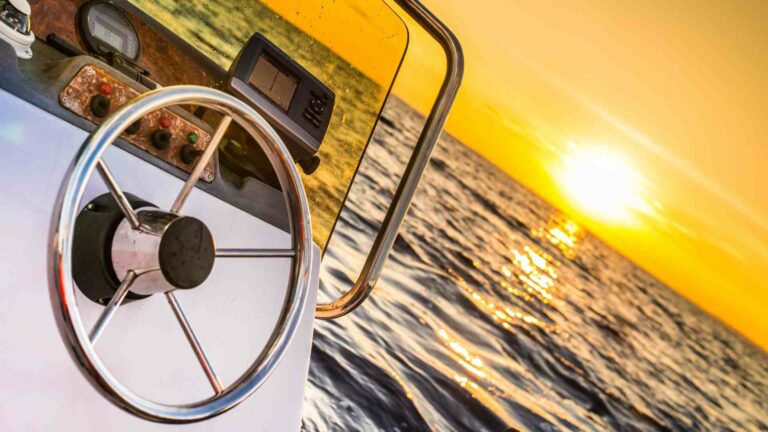The Ultimate Boat Seller’s Guide: How to Sell a Boat
Selling a boat is a significant undertaking that requires careful planning, preparation, and execution. Whether you’re upgrading to a new vessel or simply parting ways with your current one, the process can be streamlined with the right approach. This comprehensive guide provides actionable steps to help you sell your boat efficiently and effectively, covering everything from preparation to closing the deal. With a focus on maximizing value and minimizing hassle, this article is designed to equip you with the knowledge and tools needed for a successful sale.
Why Selling a Boat Matters
Boats are more than just vehicles; they’re vessels of memories, adventure, and personal investment. However, when the time comes to sell, the goal shifts to finding a buyer who values it as much as you did—while ensuring you get a fair price. Unlike selling a car or a house, the boat market has unique dynamics influenced by condition, location, seasonality, and buyer demand. By following a structured process, you can avoid common pitfalls and expedite the sale.
Step 1: Decide How to Sell Your Boat
The first decision is whether to sell the boat yourself or enlist professional help. Each option has its merits and challenges.
Selling Privately
Selling your boat privately gives you full control over the process and allows you to keep the entire sale price. However, it demands time, effort, and a willingness to handle marketing, negotiations, and paperwork. This approach works best if you’re confident in your ability to showcase the boat and manage inquiries.
Working with a Broker or Dealer
A boat broker or dealer can simplify the process by leveraging their expertise and networks. Brokers typically charge a commission—often around 10% of the sale price—while dealers might offer a trade-in option if you’re buying a new boat from them. These professionals handle advertising, showings, and legalities, but their fees reduce your net proceeds. Brokers are particularly valuable for high-value or complex boats, while trade-ins suit those prioritizing convenience over profit.
Choosing the Right Path
Consider your boat’s value, your availability, and your comfort level with sales. For boats under $30,000, private sales often make sense as broker commissions may not justify the effort they invest. For premium or niche vessels—like multihulls or classic yachts—a broker’s market knowledge can command a higher price.
Step 2: Prepare Your Boat for Sale
A well-prepared boat attracts buyers and justifies your asking price. Preparation is about more than aesthetics; it signals to buyers that the vessel has been cared for.
Clean Thoroughly
Start with a deep clean, inside and out. Scrub the hull, polish stainless hardware, and wash non-slip surfaces with a suitable cleaner. Address hidden areas like stowage compartments, bilges, and engine bays—buyers will inspect these. Remove mildew, sweep loose dirt, and ensure glass surfaces sparkle. A spotless boat suggests meticulous maintenance.
Declutter
Remove personal items and excess gear not included in the sale. Fishing rods, old bedding, and cluttered lockers detract from the boat’s appeal. A decluttered space feels larger and lets buyers envision it as their own.
Fix Mechanical and Cosmetic Issues
Repair anything broken—especially engines, electronics, and sails. A malfunctioning powerplant can kill a sale, while minor cosmetic fixes (e.g., replacing rusty screws) enhance perceived value. If the boat has a trailer, ensure it’s roadworthy. Buyers expect a seaworthy vessel, so address issues upfront rather than discounting later.
Professional Detailing
If time or expertise is limited, hire a professional detailer. A pristine boat can fetch a higher price and sell faster, often offsetting the cost.
Step 3: Determine Your Boat’s Value
Pricing your boat accurately is critical. Overprice it, and it’ll languish on the market; underprice it, and you’ll lose money.
Research Market Value
Begin with online tools like Boat Trader’s Price Checker or NADAGuides, which provide estimated values based on make, model, size, and age. These are starting points—condition and location refine the figure. Browse listings on Boat Trader, boats.com, or YachtWorld for real-time comparisons of similar boats.
Factors Affecting Value
- Condition: A well-maintained boat commands a premium; neglect lowers its worth.
- Location: Boats in high-demand areas (e.g., coastal regions) may fetch more than in landlocked markets.
- Usage: Freshwater boats typically outprice saltwater ones due to less corrosion.
- Seasonality: Spring and summer see higher demand, while winter sales may require discounts.
- Upgrades: Significant modifications (e.g., new engines) boost value, but minor accessories rarely do.
Set a Realistic Price
Avoid emotional overvaluation—boats are worth what buyers will pay. Set a competitive asking price with room for negotiation. Some sellers start high, then lower the price incrementally (e.g., 5% monthly) until interest spikes. Establish a rock-bottom price privately to guide negotiations without regret.
| Factor | Impact on Price | Example |
|---|---|---|
| Excellent Condition | +10-20% | Polished hull, tuned engine |
| Poor Condition | -20-50% | Leaks, outdated equipment |
| High-Demand Area | +5-15% | Florida vs. Midwest |
| Freshwater Use | +5-10% | Less corrosion |
| Spring Listing | +5-10% | Peak buying season |
Step 4: Advertise Your Boat
Effective advertising generates leads and drives sales. Today’s market favors digital platforms, but traditional methods still have a place.
Online Listings
List your boat on boating-specific sites like Boat Trader, boats.com, or YachtWorld (via a broker). General marketplaces like Craigslist, eBay, and Facebook Marketplace broaden your reach but face more competition. Include:
- Detailed Description: Specify dimensions (LOA, beam, draft), upgrades, and equipment (model numbers, brands).
- High-Quality Photos: Shoot during golden hour (morning/evening) for soft lighting. Capture the boat on water, not just on a trailer. Avoid glare and clutter.
- Video: A short walk-around video showing a cold start and key features builds trust.
Traditional Methods
Place a “For Sale” sign on the boat in a high-traffic area (e.g., near a marina or busy road). Advertise in local papers or boating magazines if your target audience reads them.
Social Media Boost
Share your listing on Facebook, Instagram, or owner forums (e.g., Moody Owners Association). A blog detailing your boat’s history can attract enthusiasts, though avoid highlighting past issues.
Best Places to List Your Boat
| Platform | Cost | Reach | Best For |
|---|---|---|---|
| Boat Trader | $59+ | High | Nationwide buyers |
| Facebook Marketplace | Free | High | Local buyers |
| Craigslist | Free | Medium | Budget boats (<$20K) |
| eBay | Fees apply | High | Rare/unique boats |
| YachtWorld | Broker-only | High | Luxury yachts |
Creating a Winning Listing
- High-Quality Photos (minimum 15-20 images, including interior, engine, and hull).
- Detailed Description (specs, upgrades, maintenance history).
- Video Walkthrough (boosts buyer confidence).
Example Listing Template:
FOR SALE: 2018 Boston Whaler 230 Outrage
- Price: $55,000 (negotiable)
- Engine: Yamaha 250HP (300 hrs, serviced annually)
- Upgrades: Garmin GPS, new upholstery, trailer included
- Location: Miami, FL
- Contact: (555) 123-4567
Step 5: Show the Boat to Buyers
When buyers respond, be ready to showcase your boat professionally.
Initial Viewing
Arrive early to clean windows, ventilate the cabin, and start the engine (let it cool for a cold-start demo). Highlight features and upgrades, but let buyers explore independently for 15-20 minutes to discuss privately.
Sea Trial
Offer a sea trial to serious prospects. Motor to open water, raise sails if applicable, and let the buyer helm (if licensed). Keep it fun but safe—limit passengers and avoid risky maneuvers. Demonstrate systems (e.g., electronics, refrigeration) work seamlessly.
Be Honest
Disclose known issues upfront. Honesty builds trust and prevents post-sale disputes. Have maintenance records and ownership documents ready to reassure buyers.
Step 6: Handle Paperwork
Proper documentation ensures a legal, smooth transfer of ownership. Requirements vary by state or country, so research local regulations.
Essential Documents
- Bill of Sale: Details the boat, price, and signatures. Templates are available online or via your DMV.
- Title/Registration: Proves ownership; sign it over to the buyer.
- VAT Invoice: Required if VAT applies (common in the UK/EU).
- Maintenance Records: Boosts buyer confidence.
- Boat History Report: Optional but reassuring, available via boathistoryreport.com.
- Trailer Title: If included, transfer separately.
Survey and Haulout
Buyers may request a survey (their expense) to inspect the hull and systems. Facilitate by cleaning bilges and ensuring access to equipment. A haulout reveals below-waterline condition—coordinate with the buyer, who typically pays.
Step 7: Secure Payment and Close the Deal
Finalizing the sale requires secure payment and clear terms.
Payment Tips
- Cash: Verify bills (check serial numbers, use a magnet test for authenticity). Count with a third party present.
- Bank Transfer: Wait for funds to clear before releasing keys.
- Escrow: For large boats, use a marine lawyer or title company to hold funds until paperwork is complete.
Closing
Sign the Bill of Sale and transfer titles. For high-value boats, mirror broker processes with a Yacht Purchase and Sale Agreement. Remove personal items, deliver included gear (e.g., safety equipment), and hand over the keys. The boat is now theirs!
Alternative: Using a Broker
If private selling feels overwhelming, a broker offers expertise and convenience. They:
- Price accurately using market data.
- Market effectively via YachtWorld and networks.
- Handle showings, negotiations, and paperwork.
- Depersonalize the process, reducing stress.
The trade-off is a commission (typically 10%), but for complex or high-value boats, the investment often pays off.
Real-World Example: Andy’s Story
Andy Hazell sold his Moody 346 privately after 10 years of ownership. He cleaned it thoroughly, leveraged his yacht club network, and secured a buyer with a 10% deposit. A sea trial and survey followed, and his bulletproof paperwork (original sale docs, VAT proof) sealed the deal. Andy’s proactive maintenance and realistic pricing netted a fair return, proving preparation pays.
FAQs
How Fast Can I Sell My Boat?
What’s My Boat Worth?
Best Websites to List?
Conclusion
Selling a boat blends preparation, pricing, and promotion. Whether you go solo or use a broker, the key is presenting a clean, seaworthy vessel at a fair price. With high-quality photos, honest showings, and airtight paperwork, you’ll attract buyers and close the deal efficiently. Now, get started—your next adventure awaits!
Happy Boating!
Share The Ultimate Boat Seller’s Guide: How to Sell a Boat with your friends and leave a comment below with your thoughts.
Read Boat Financing: How to Secure a Boat Loan until we meet in the next article.






